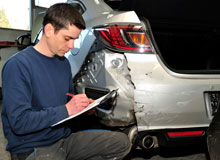
Since the auto industry’s recent financial crisis, dealerships have been slow in rebuilding business. Although sales were good for 2011, they fell slightly short of the 13 million forecast initially predicted. While the industry is hopeful that last year’s sales momentum has carried into this year (promising a profitable year-end for 2012), those dealerships that weren’t forced to close their doors in the wake of 2009’s bankruptcies and bailouts are still looking for creative ways to bolster their bottom lines in order to take the pressure off of auto sales.
For most, the answer lies in the service department.
A crucial revenue stream for any dealership is an in-house service department. There, dealers can profit from the automotive parts and labor involved in regular maintenance and repair performed on vehicles, increasing profitability through additional sales without having to move inventory off the lot. Recently, dealership service departments across the nation have ramped up their efforts to compete with stand-alone mechanics and quick-lube centers by offering competitive pricing, newer facilities, and increased service hours; and their efforts are definitely paying off.
According to this year’s National Auto Dealers Association State-of-the-Industry Report, franchised dealership service, parts, and body shop sales in 2011 reached more than $80 billion, up 4.7 percent from 2010. This is a continued trend from 2010, which showed an increase in sales of approximately five percent from 2009, and the industry is positive revenue will continue to grow as dealers improve service levels.
As it stands, almost 90 percent of new dealerships currently offer evening and/or weekend service hours, averaging a total of 56 hours of availability each week nationwide. Dealerships make this investment in service in order to boost sales and customer convenience while providing full use of their service facilities, but there’s still room for growth.
Dealerships can continue to increase sales margins by taking advantage of services that are either outsourced or not offered at all; namely, auto glass repair. Typically, dealers contract technicians to install or repair new auto glass on-site. This drives up cost for the dealer, and ultimately the customer, because it includes the price of the glass, the third-party technician’s labor, and the markup.
Eliminating the middle man is Economics 101 when it comes to business ownership and it’s a way auto dealers can position themselves more competitively against independent body shops and auto glass repair companies. By having their own technicians install and repair auto glass, dealerships can increase sales through reduced costs while continuing to provide a wealth of on-site services to its customers. The same goes for body repair.
Although statistics in the 2012 NADA report show an increase in dealers offering on-site body shops (up four percent from 2010), the number is due only to a reduction in the total number of dealerships in business that year. Still, overall sales for 2011 topped $6 billion and showed minimal decrease from the prior year. With national sales averages this high, it’s a wonder why most dealers are trending toward eliminating body repair altogether.
Whether for collision repair or minor paint touch-ups, body shops are constantly in demand. Dealers who take advantage of this need without sub-contracting the work to authorized shops will realize higher profit levels each quarter. But a new car dealer isn’t the first destination that comes to mind for consumers considering body repair. That’s why some dealers are finding inventive ways to advertise the little-known services they provide. For example, Joe Rizza Ford in Chicago features an informative video on its website on why buying tires at a dealer (a service most consumers don’t think of when they imagine dealerships) may be more beneficial than purchasing them from an independent tire shop.
It’s important for auto dealers to evolve to the needs of consumers. Although the auto industry has rebounded greatly since 2010, sales indicate that car owners are increasing the lives of their vehicles by purchasing fewer cars annually. Those dealerships that have adapted to this trend are finding maintained profitability through revenue generated in the service department. And those dealers who continue to provide more service options for customers will continue to improved financial growth.





